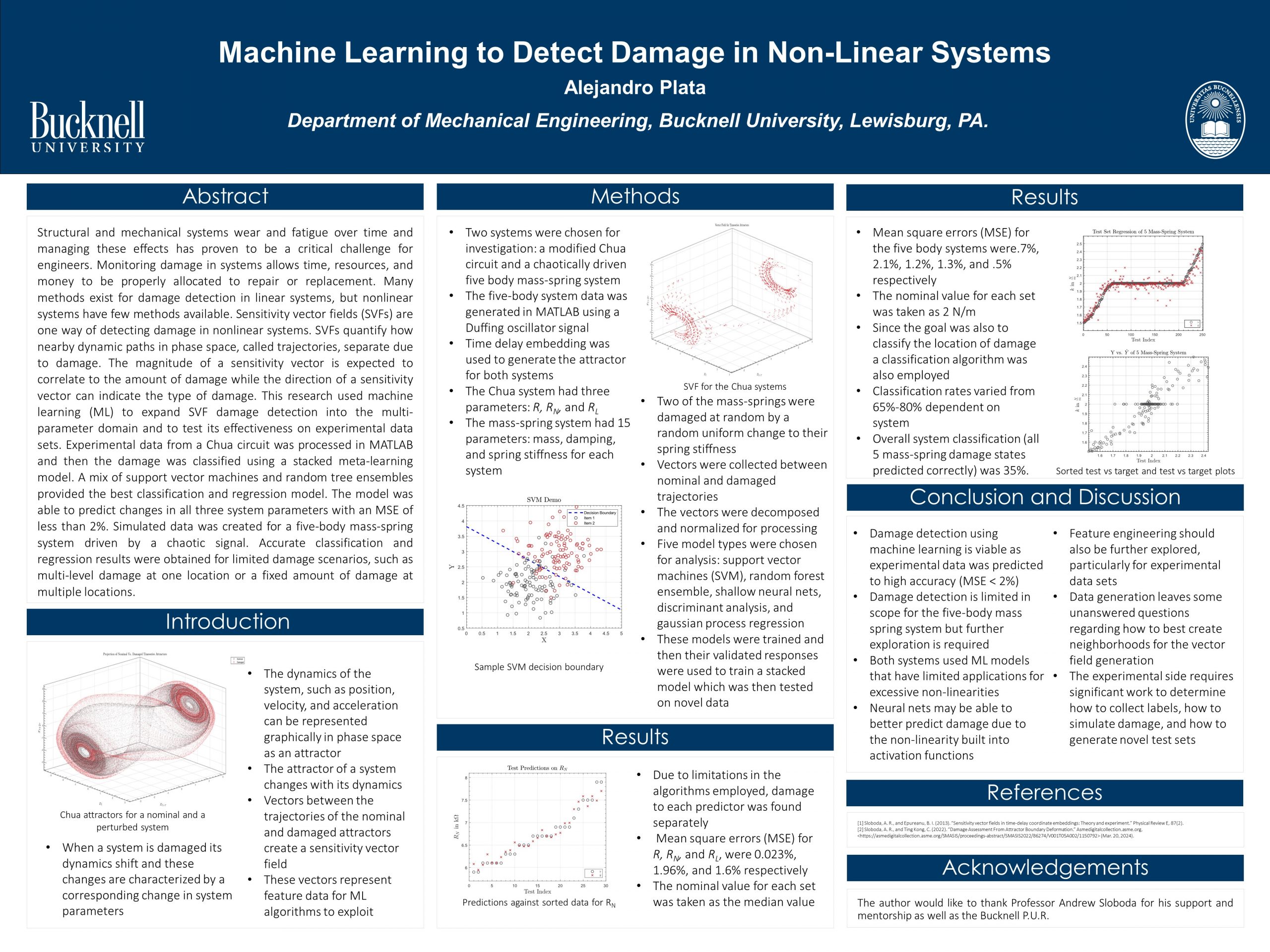
Machine Learning to Detect Damage in Non-Linear Systems
Author:
Alejandro Plata ’25Co-Authors:
Faculty Mentor(s):
Andrew Sloboda, Mechanical EngineeringFunding Source:
PURAbstract
Structural and mechanical systems wear and fatigue over time and managing these effects has proven to be a critical challenge for engineers. Monitoring damage in systems allows time, resources, and money to be properly allocated to repair or replacement. Many methods exist for damage detection in linear systems, but nonlinear systems have few methods available. Sensitivity vector fields (SVFs) are one way of detecting damage in nonlinear systems. SVFs quantify how nearby dynamic paths in phase space, called trajectories, separate due to damage. The magnitude of a sensitivity vector is expected to correlate to the amount of damage while the direction of a sensitivity vector can indicate the type of damage. This research used machine learning (ML) to expand SVF damage detection into the multi-parameter domain and to test its effectiveness on experimental data sets. Experimental data from a Chua circuit was processed in MATLAB and then the damage was classified using a stacked meta-learning model. A mix of support vector machines and random tree ensembles provided the best classification and regression model. The model was able to predict changes in all three system parameters with an MSE of less than 2%. Simulated data was created for a five-body mass-spring system driven by a chaotic signal. Accurate classification and regression results were obtained for limited damage scenarios, such as multi-level damage at one location or a fixed amount of damage at multiple locations.